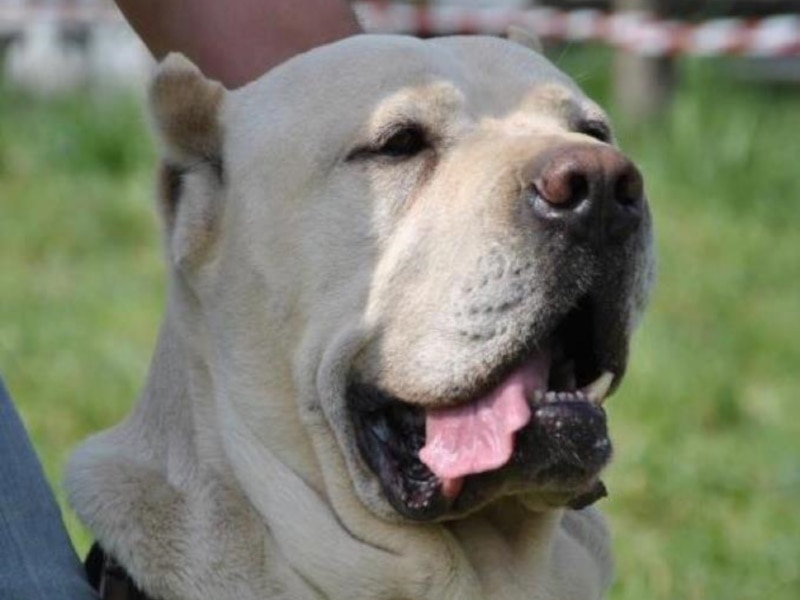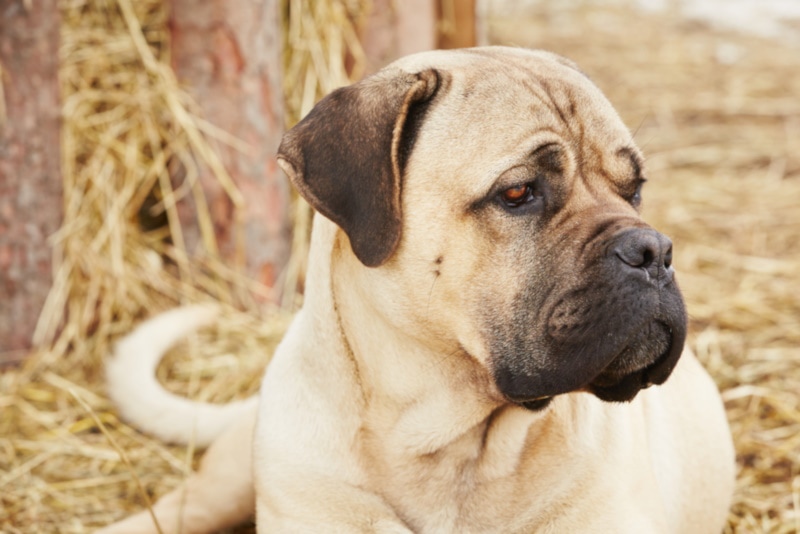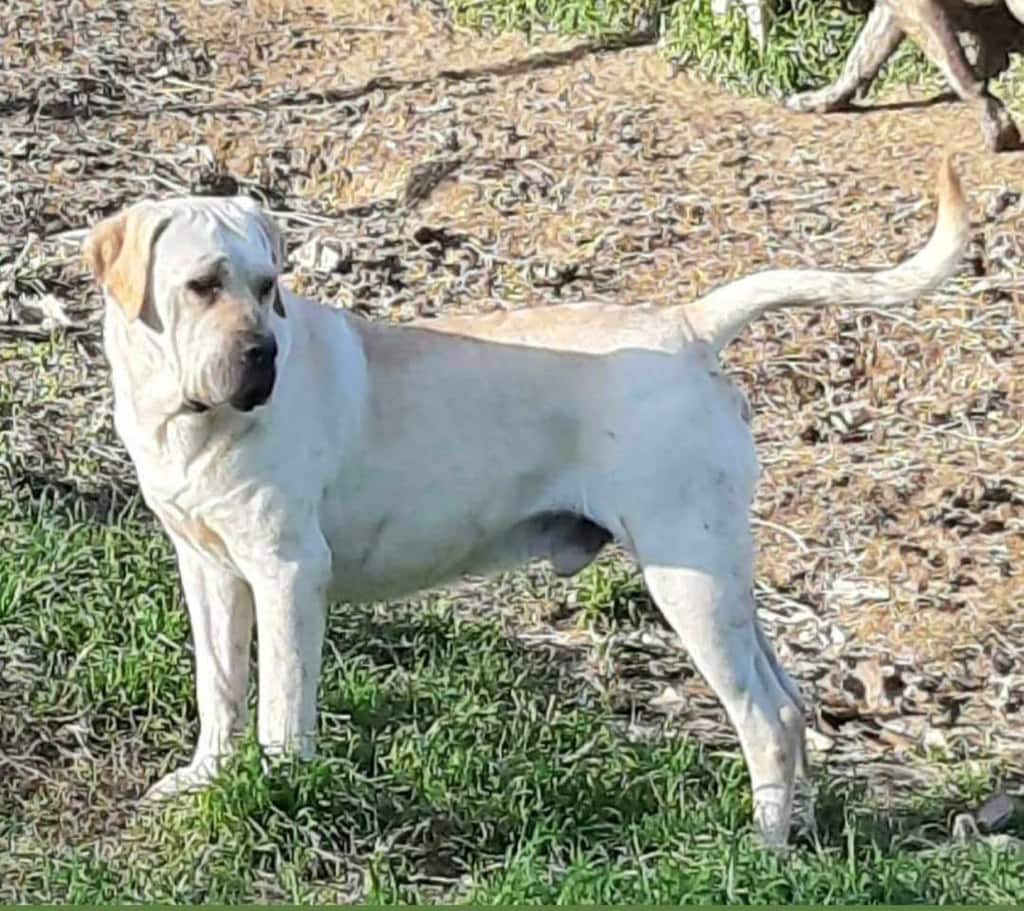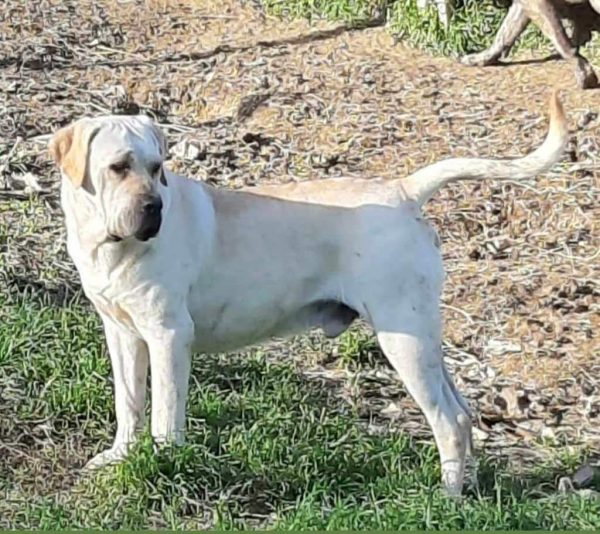Click to Skip Ahead
The White Cane Corso is a rare color variation within the Cane Corso breed, not a separate breed. Also known as a Straw Cane Corso, the White Cane Corso is quite striking because the most common color found in this breed is black. Beyond its striking coat color, these dogs exhibit the same qualities that make the Cane Corso so beloved across the globe: its intense loyalty, courage, and protective instincts.
Breed Overview
Height:
23.5–28 inches
Weight:
99–110 pounds
Lifespan:
10–12 years
Colors:
Black, gray, red, fawn, chestnut, brindle
Suitable for:
Experienced dog owners, people with active lifestyles
Temperament:
Intelligent, confident, loyal, highly trainable
While “straw” or “white” may not be an official color for the Cane Corso, these dogs can still make for amazing companions. Read on to learn more about these majestic dogs, from their origins to the breed’s current state.
White Cane Corso Breed Characteristics
The Earliest Records of the White Cane Corso in History
The Cane Corso, also known as the Italian Mastiff, is a large and ancient dog breed that originated in Italy as far as two thousand years back to the Roman Empire. The breed’s ancestors were likely the Molossus, a type of dog commonly used by the Romans in warfare and hunting, combined with other local Italian breeds.
During the Roman Empire, these dogs were primarily used as war dogs, for personal protection, and as livestock guardians. They were known for their strength, agility, and fearlessness, which made them highly prized in these roles.
How the White Cane Corso Gained Popularity
The Cane Corso’s geographic distribution was initially limited to Italy, but as trade and travel increased over the centuries, the breed also made its way to other parts of Europe. Still, the breed’s rural nature meant it never became very popular outside of those circles.
In fact, the breed was close to extinction by the mid-20th century. Thankfully, a group of dedicated Italian breeders began to revive the breed in the 1970s, working to preserve its unique characteristics and lineage.
A few years after that, the breed was introduced to the United States in the 1980s by Neapolitan Mastiff enthusiast Michael Sottile. He saw one after attending a Sicilian wedding and ended up bringing the first Cane Corso litter to the country. Michael Sottile played a key role in the breed’s development in the US, which also contributed to greater recognition of the breed overall.
Nowadays, the Cane Corso is one of the most Googled dog breeds in the world and one of the top 20 most popular dog breeds, according to the AKC.
Formal Recognition of the White Cane Corso

The Cane Corso as a general breed was recognized by the Italian Kennel Club (Ente Nazionale della Cinofilia Italiana) in 1994 and by the Fédération Cynologique Internationale (FCI) in 1996. The American Kennel Club (AKC) followed suit in 2010.
While the breed itself has achieved official recognition, the White Cane Corso has not. Their coat color is considered a fault in the breed, and they are not eligible to compete in shows.
Top 3 Unique Facts About the White Cane Corso
1. The breed’s name is pronounced KAH-NAY KOR-SO.
It also came from the Latin word “cohors,” which meant protector or guardian.

2. Romans used them to fight lions.
Aside from being war dogs, Cane Corso dogs were also used for entertainment in Ancient Rome. They were so powerful that they were frequently made to fight lions!
3. White Cane Corso dogs can suffer from health issues.
White Cane Corsos are more prone to deafness and skin issues due to their lack of pigmentation.
 Does the White Cane Corso Make a Good Pet?
Does the White Cane Corso Make a Good Pet?
Yes, White Cane Corso dogs can make for exceptional pets. However, they’re a better fit for experienced dog owners. The White Cane Corso is not a lap dog that will be content snuggling and napping all day.
They require consistent training and socialization from an early age due to their strong-willed nature and powerful stature. Aside from training, they also need lots of exercise. This dog will happily go on long hikes and other adventures with you. But without that, it can quickly become a destructive dog.
Grooming requirements for a White Cane Corso are relatively low. Their short, dense coat only needs regular brushing to remove loose hair and maintain its healthy appearance. They don’t shed too much, as well.
In all, owning a Cane Corso is a serious commitment, but if you’re up for it, you’re going to have a fiercely devoted and loving companion for life.
Conclusion
The White Cane Corso may not make it to the show ring, but their hearts and personalities are just as big as those with standard colors.
If you’re thinking of bringing one home, know that the Cane Corso can be a challenging breed to own. They’re large and powerful, with an assertiveness that requires training to shape it into a gentle, obedient, and confident companion.
Other than that, a well-trained Cane Corso is an exceptional dog—protective, loving, and ready to lay down its own life for its family.
See also:
- Hydrotherapy for Dogs: Vet-Verified Facts & FAQ
- Responsible Dog Ownership Month: When Is It & How To Celebrate?
Featured Image Credit: Cane Corso frumentino (Molossus angitae, via Wikimedia Commons CC BY-SA 4.0)





 Does the White Cane Corso Make a Good Pet?
Does the White Cane Corso Make a Good Pet?






